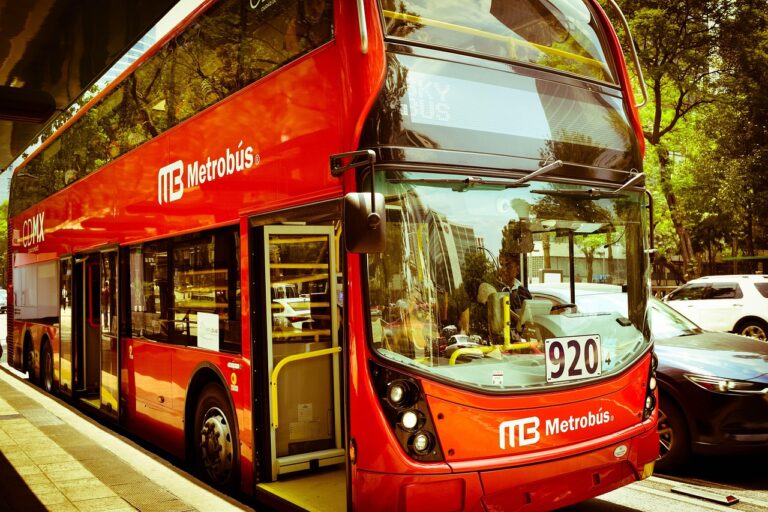Top 5 Scenic Road Trips in Mexico You Shouldn’t Miss
Mexico’s diverse landscape offers some of the most breathtaking driving experiences in North America, from coastal highways hugging the Pacific to mountain roads winding through colonial towns. These five scenic road trips showcase the country’s remarkable variety of terrain, culture, and history while providing travelers with unforgettable journeys through this vibrant nation.
Key Takeaways
- The Baja California Peninsula route offers 1,000 miles of dramatic coastline views and desert landscapes
- Copper Canyon’s El Chepe train route combines rail and road travel through canyons four times larger than the Grand Canyon
- The Yucatan Peninsula circuit connects ancient Mayan ruins with crystal-clear cenotes and colonial cities
- Mexico’s Colonial Heartland route takes you through the country’s most beautiful historic towns and silver mining history
- The Pacific Coast Highway delivers access to pristine beaches, surfing towns, and authentic coastal communities
Baja California Peninsula: Tijuana to Cabo San Lucas
The legendary Baja Peninsula offers one of Mexico’s most iconic road trips, stretching nearly 1,000 miles from the US border to the southern tip at Cabo San Lucas. This spectacular coastal highway alternates between the Pacific Ocean and the Sea of Cortez, delivering constantly changing vistas of desert landscapes meeting turquoise waters.
The journey takes approximately 3-5 days of driving time, but I recommend allowing at least 10 days to properly explore the region. Key stops include the wine country of Valle de Guadalupe, the whale-watching paradise of Guerrero Negro, and the laid-back surf town of Todos Santos before reaching the resort destination of Cabo San Lucas.

This route offers incredible opportunities for wildlife spotting, from gray whales (December to April) to sea lions and countless bird species. The isolated beaches and fishing villages along the way provide authentic glimpses into traditional Mexican coastal life rarely seen in more developed tourist areas.
While much of the route follows Mexico Highway 1, many sections remain quite remote with limited services. I suggest traveling with a full-size spare tire, extra water, and downloading offline maps before departure. Renting a 4×4 vehicle is ideal for accessing some of the more secluded beaches and viewpoints along this stunning peninsula.
Copper Canyon: Chihuahua to Los Mochis
The Copper Canyon road trip offers an extraordinary combination of rail and road travel through a canyon system four times larger than the Grand Canyon. The famous “El Chepe” train (Ferrocarril Barrancas del Cobre) forms the backbone of this journey, but driving portions allow for deeper exploration of this remarkable region.
Beginning in Chihuahua City, this route winds through dramatic mountain scenery, indigenous Rarámuri communities, and former mining towns. The most spectacular sections include the viewpoints at Divisadero and the canyon-side town of Batopilas, accessible via a thrilling descent down switchback roads cut into the mountainside.
This trip requires at least 5-7 days to properly experience, with significant time spent at various stops along the way. Adventure seekers will find opportunities for hiking, zip-lining across canyons, and visiting remote waterfalls that few tourists ever see.
The best times to undertake this journey are spring (March-May) and fall (September-November) when temperatures are mild. Summer can bring heavy rains that occasionally wash out roads, while winter at higher elevations can be surprisingly cold with occasional snow.
Yucatan Peninsula Circuit: Cancun to Merida
The Yucatan Peninsula offers perhaps the most accessible road trip for first-time visitors to Mexico, with excellent roads connecting ancient Mayan cities with colonial towns and natural wonders. Beginning in Cancun, this circular route takes you through the heart of the Maya world and showcases both cultural and natural highlights.
Key stops include the coastal ruins of Tulum, the magnificent pyramids of Chichen Itza and Uxmal, the yellow city of Izamal, and the colonial capital of Merida. Between these major destinations, you’ll discover hidden cenotes (natural limestone sinkholes) perfect for swimming, authentic small towns, and some of Mexico’s most celebrated regional cuisine.
Allow 7-10 days for this circuit to avoid rushing between destinations. The flat terrain makes for easy driving, though I recommend stopping frequently to explore the numerous attractions away from the main highways.
One highlight is the Ruta Puuc, a dedicated scenic route connecting five lesser-visited Mayan sites south of Merida. The road passes through dense jungle where you might spot spider monkeys, toucans, and other wildlife between visits to remarkably preserved archaeological sites with few other visitors.
Visiting ancient Mayan ruins is a highlight of any Yucatan road trip, with Palenque in neighboring Chiapas offering some of the most impressive structures surrounded by lush jungle. The combination of tropical forests, underground rivers, and ancient history makes this circuit uniquely appealing.
Colonial Heartland: Mexico City to San Miguel de Allende
Mexico’s colonial heartland offers a journey through the country’s fascinating historical core, connecting colorful cities built during the Spanish colonial era. Starting from Mexico City, this route winds through the central highlands on excellent highways and scenic backroads, showcasing Mexico’s rich architectural heritage.
The route typically includes stops in Querétaro, San Miguel de Allende, Guanajuato, and Zacatecas—all UNESCO World Heritage cities with distinctive characters. Each features remarkably preserved colonial centers with ornate churches, elegant plazas, and winding cobblestone streets that seem frozen in time.
This road trip combines cultural immersion with spectacular mountain scenery as you traverse the Sierra Madre. The region’s silver mining history is evident throughout, particularly in Guanajuato where narrow alleyways climb steep hillsides and former mines can be toured.
I recommend taking at least 10 days for this journey to fully appreciate each city’s unique atmosphere and cultural offerings. The temperate climate at these higher elevations makes this trip enjoyable year-round, though the landscape is most vibrant during and just after the summer rainy season (June-September).
Pacific Coast Highway: Puerto Vallarta to Acapulco
Mexico’s Pacific coastline offers a less-traveled but incredibly rewarding road trip connecting major beach destinations with hidden coastal treasures. The route from Puerto Vallarta to Acapulco spans approximately 600 miles of stunning shoreline, jungle-covered mountains, and authentic fishing villages.
Heading south from Puerto Vallarta, you’ll discover the bohemian surf town of Sayulita, the pristine beaches around Chamela Bay, and the laid-back coastal town of Zihuatanejo before reaching the iconic bay of Acapulco. The road alternates between hugging the coastline and cutting inland through tropical forests, offering constantly changing perspectives.
This journey connects several distinct coastal regions, each with its own character and appeal. The Costalegre section south of Puerto Vallarta features exclusive resorts hidden on private coves, while the Costa Grande in Guerrero state offers more authentic Mexican beach towns rarely visited by international tourists.
I suggest allocating at least two weeks for this trip to include beach time and exploration of coastal villages. The best driving period is during the dry season (November-May), as summer rains can occasionally cause landslides on coastal roads.
Wildlife encounters are common along this route, from humpback whales during winter months to nesting sea turtles on protected beaches. Several nature reserves along the way protect important coastal ecosystems and provide opportunities for guided eco-tours into mangrove forests and bird-rich lagoons.
Final Thoughts
Mexico’s diverse geography makes it ideal for road trip adventures, offering everything from desert landscapes to tropical jungles within relatively short distances. These five scenic routes only scratch the surface of what’s possible in this expansive country, but they represent some of the most rewarding driving experiences available.
Whether you’re drawn to ancient ruins, colonial architecture, natural wonders, or simply spectacular driving routes, Mexico delivers unforgettable road trip experiences. Pack your sense of adventure, brush up on basic Spanish phrases, and hit the road to discover the remarkable diversity and beauty that make Mexico a world-class road trip destination.
Sources
Visit Mexico – Road Trips
Lonely Planet – Best Road Trips in Mexico
Mexico Desconocido – Rutas Carreteras México
National Geographic – Best Road Trips in Mexico
Mexico Desconocido – Viajes Carretera México




